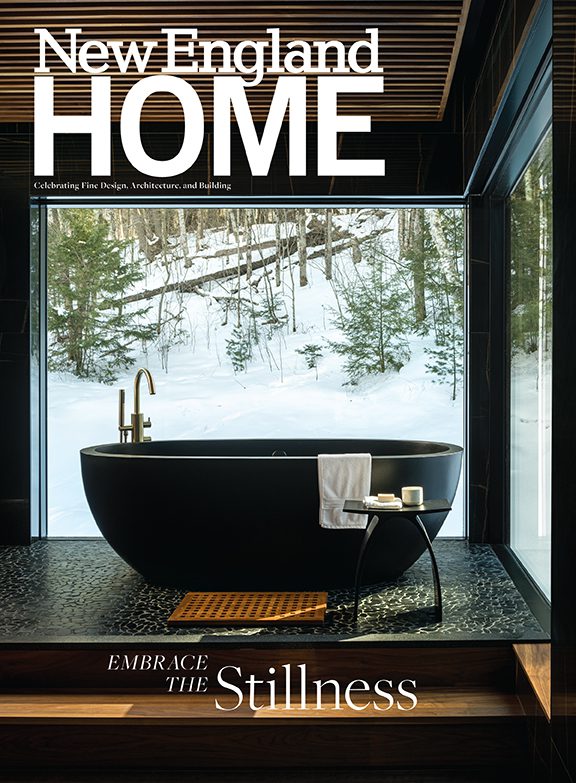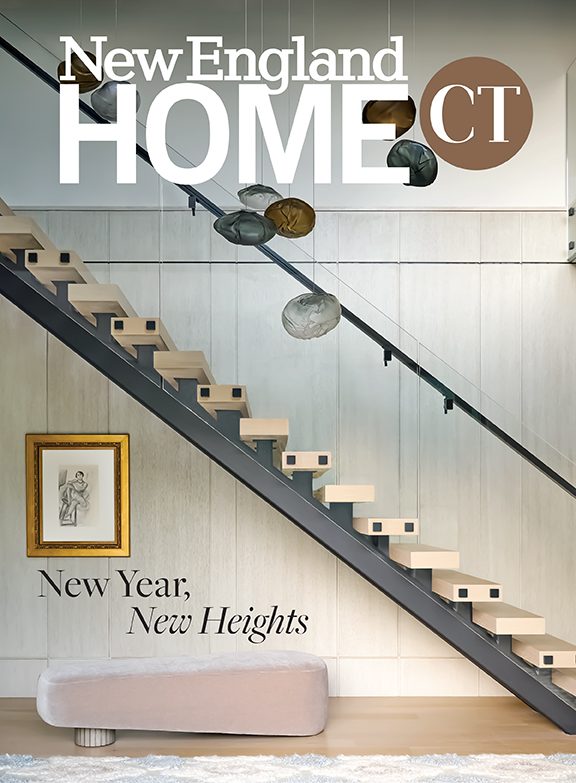Designing Women
March 2, 2012
Text by Regina Cole Photography by Michael J. Lee
Abby Cahill and Amy Meier met at their first jobs when both were just out of college and living in Boston. They became fast friends, shared an apartment and, when their respective careers took them to New York, roomed together in Manhattan as well. When Abby married Greg O’Brien, Meier designed her wedding dress.
Today the two young women live on opposite coasts, but Meier is still designing for Abby Cahill O’Brien. Their ongoing collaborative project—Abby and Greg’s Rockport, Massachusetts, home—embodies delightful echoes of their shared history: for nearly 100 years, the house served as a summer vacation destination for Boston’s young working women.
Meier, who holds a degree in fashion design from Parsons, directs her interior design practice from Del Mar, California. She segued from fashion to interiors while living on the East Coast. “I love people,” she explains of her career change. “In fashion, you are removed from the end user. I am drawn to working directly with people, bringing out their taste, touching the materials.” Abby and Greg began house hunting while Abby was making her own career transition from advertising to freelance writing. It was a foregone conclusion that Meier would transform whatever house they found into a beautiful home; the fact that they searched on the North Shore of Massachusetts while Meier lived in Southern California was immaterial. “Amy and I have been best friends forever; I didn’t have to worry about whether she got my aesthetic or not,” Abby says.
Greg and Abby wanted an old house. “From growing up in New England, I was always more comfortable in old houses,” Abby says. “If I saw a modern house when we were house hunting, I always felt as though something was missing.”
A 3,000-square-foot Georgian farmhouse with seven bedrooms eventually caught their eye. “When we saw the listing, we fell in love. It took me a while to realize that I recognized this house,” Abby says. She grew up in nearby Gloucester and knew the expansive Georgian not ten miles from her childhood home as the recently defunct Rockport Lodge.
In 1907, the Massachusetts Association of Women Workers bought the late eighteenth-century David J. Smith house for $3,000, part of a turn-of-the-century movement to improve the lives of immigrant laborers. Named the Rockport Lodge, it provided Boston’s young, single working women with the kind of seaside vacation they could never afford otherwise. For train fare from Boston plus $4 a week, women got room and board plus hiking, sailing, badminton, tennis, swimming, horseback riding, picnics on the beach and evening theatricals. By 1946, when the Rockport Lodge became part of Boston’s venerable Women’s Educational and Industrial Union, it accommodated as many as 700 guests a season in several buildings. Women’s lives changed radically during the twentieth century; by its end, the Lodge’s original mission was no longer viable.
By the time Abby and Greg saw the listing for what had originally been Mr. Smith’s farmhouse, it had reverted to use as a private home. In 2002, a developer had removed walls to create an open floor plan, reinforced the spaces with steel support beams and installed cherry flooring.
During this renovation, two front parlors became one broad room spanning the width of the house, with the front door centered on the street-facing wall. In Meier’s hands, this challenging space became stunning. The designer focused two distinct conversation groupings around the original parlor fireplaces, one defined by black-leather and chrome furniture, the other by streamlined sectionals in neutral upholstery. Between them, built-in bookcases face the door. The eclectic, arresting composition rests on a boldly zigzag-stenciled floor.
“We love to have people in, and we have found that the front room is the ultimate entertaining space,” Abby says.
“This room is all about mixing old and new,” says Meier. “I found an antique chandelier and some Italian gilt tables; they are juxtaposed with contemporary upholstered furniture and a Saarinen Tulip Table. The painted floor leads the eye away from any tunnel-like effect,” she adds.
For Greg, watching his wife and her best friend at work involved the occasional leap of faith. “Sometimes, like when they decided to stencil the front-room floor, I’d think, ‘You guys are crazy. You can’t do this to my house,’” he says, laughing. “Then they’d do it and I’d love it.”
Meier explains the process: “Once the core pieces were installed, Abby collected the accessories needed to tie the project up. This wouldn’t work for everyone, but it turned out really well for us. It helps that we’re so close, which allows us to be brutally honest with each other. And of course, if she didn’t love the hunt, it wouldn’t work at all!”
At the rear of the classically proportioned house, the kitchen flows into the dining room, living room and Greg’s home office. Meier’s eclectic sensibility is evident throughout. Greg’s work desk, for example, is a glass tabletop resting on chrome sawhorses. The dining room sideboard had a previous life as a store’s checkout counter; Meier dressed it up with an elegant marble top. The diverse mix continues in a blue-paneled den, where traditional architectural elements and furniture meet a Meier-designed coffee table on a modern X base. “Greg wanted a cozy, cozy room,” Meier says. Above the paneling, framed photographs of Rockport Lodge vacationers hang on walls softened with grasscloth.
The friends’ collaboration is an ongoing process. “Abby and Greg are just beginning to collect and aren’t constrained by space,” Meier says. “This means Abby and I can find pieces they love at a leisurely pace. We go antiquing, and spent several days at Brimfield together.”
“It’s great to have a house that’s too big—I can shop!” says Abby, who is expecting the couple’s first child.
While they continue to make the house their own, the couple left one thing unchanged. Above the front door, a gilt-lettered sign reads ROCKPORT LODGE.
“People looking for lodging stop by all the time,” Abby says with a laugh. “But it’s so much a part of the house, we just can’t bring ourselves to take it down.”
Interior Design: Amy Meier
Share
![NEH-Logo_Black[1] NEH-Logo_Black[1]](https://b2915716.smushcdn.com/2915716/wp-content/uploads/2022/08/NEH-Logo_Black1-300x162.jpg?lossy=1&strip=1&webp=1)






















You must be logged in to post a comment.